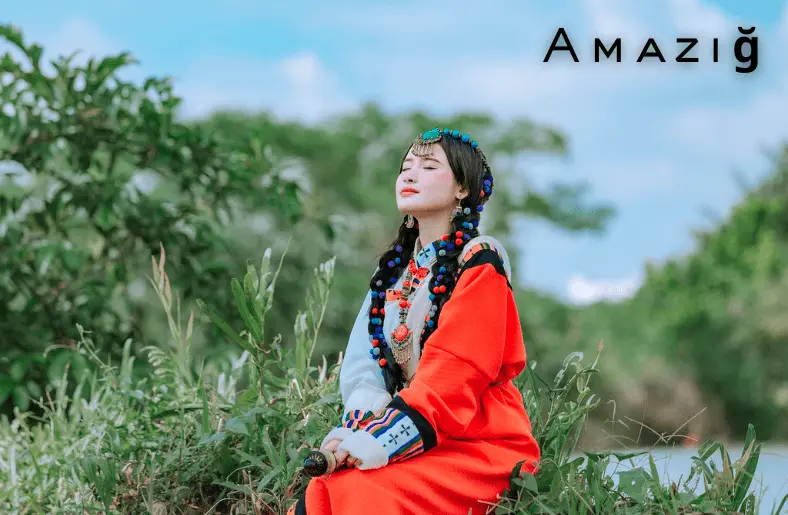The Amaziğ culture, also known as Berber, is a rich and ancient heritage. Primarily found in North Africa, it spans Morocco, Algeria, Tunisia, Libya, and the Sahara. The Amaziğ people have a deep connection to their land and traditions. Resilience is key in their history. Despite numerous invasions and colonizations, they have preserved their identity. Over centuries, they faced Roman, Arab, and French conquests. Each challenge strengthened their resolve. The Amaziğ language, Tamazight, is a symbol of this endurance. Their art, music, and traditions reflect a vibrant and enduring spirit. Festivals and rituals showcase their cultural pride. The Amaziğ’s ability to adapt while maintaining their heritage is remarkable. Today, they continue to navigate modern challenges with the same resilience. This cultural perseverance is inspiring. It highlights the importance of holding onto one’s roots while embracing change. Thus, Amaziğ resilience is a testament to their enduring legacy.
Ancient Origins and Historical Context
The Amaziğ people have ancient roots in North Africa. Their history spans millennia. Initially, they were nomadic tribes. Over time, they settled in fertile areas. They built early civilizations. Thus, they interacted with Phoenicians and Carthaginians. Later, they faced Roman invasions. Despite this, they maintained their culture. Arab conquests brought Islam. Yet, the Amaziğ retained their language. They also influenced Islamic culture. During the Middle Ages, there kingdoms emerged. Notably, the Almoravid and Almohad dynasties. These kingdoms expanded their influence. They reached Spain and West Africa. The French colonized North Africa in the 19th century. This posed new challenges. However, the Amaziğ resisted. They preserved their traditions. Throughout history, their resilience has been evident. It enabled them to adapt and survive. Today, their heritage continues to thrive. This historical context underscores their enduring spirit. Indeed, the Amaziğ legacy is a rich tapestry of resilience and adaptation.
Language and Literature About Amaziğ
Amaziğ language, Tamazight, is central to their identity. It has ancient roots. Despite many influences, it remains unique. Tamazight has its own script, Tifinagh. This script is ancient and distinctive. The language survived through oral traditions. Storytelling is vital in Amaziğ culture. Elders pass down tales and wisdom. These stories preserve history and values. Moreover, poetry is a cherished art form. Amaziğ poets express emotions and experiences. Their works reflect daily life and spirituality. Written literature also evolved over time. Modern authors write in Tamazight, celebrating their heritage. They explore contemporary issues and themes. Efforts to preserve the language are ongoing. Schools now teach Tamazight. There are also cultural programs and festivals. These initiatives help keep the language alive. Tamazight’s endurance
Art and Craftsmanship In Amaziğ
Amaziğ art and craftsmanship are vibrant and intricate. They reflect a deep cultural heritage. Jewelry-making, weaving, and pottery-making are examples of traditional crafts. Each piece tells a story. Patterns and symbols have significant meanings. For instance, geometric designs often represent nature. Additionally, bright colors are commonly used. They symbolize joy and life. Furthermore, tattoos and body art are important. They carry cultural and personal significance. Amaziğ textiles are renowned for their quality. Rugs and carpets are handmade with care. Jewelry, especially silver pieces, is exquisite. It often features intricate designs. These crafts are passed down through generations. They are taught within families. Consequently, they preserve traditional skills. Modern about this artists continue these practices. They blend tradition with contemporary styles. Thus, Amaziğ art and craftsmanship remain dynamic. They make the past and present connected.
Spirituality and Beliefs
Amaziğ spirituality and beliefs are deeply rooted in nature. They revere the land and its elements. Mountains, rivers, and forests hold spiritual significance. Ancestral worship is also important. They honor their ancestors through rituals. Additionally, they believe in the power of spirits. These spirits inhabit natural objects and places. Traditional ceremonies often involve offerings. These offerings include food, incense, and prayers. Consequently, these practices foster a strong community bond. Furthermore, many Amaziğ people follow Islam. They blend Islamic beliefs with traditional practices. This syncretism creates a unique spiritual identity. Festivals are vibrant and meaningful. They celebrate life, nature, and heritage. Additionally, music and dance play vital roles. They are integral to spiritual rituals. Modern Amaziğ communities continue these traditions. They adapt them to contemporary life. Thus, Amaziğ spirituality and beliefs remain dynamic.
Global Influence and Cultural Exchange
Amaziğ culture has significantly influenced the world. Through migration, these people have spread globally. Consequently, their traditions reach new audiences. Additionally, their art and music inspire many. They blend with other cultural expressions. Moreover, global festivals feature these performances. This promotes cultural exchange and understanding. Furthermore, Amaziğ cuisine is gaining popularity. People enjoy its unique flavors and techniques. International collaborations in art are common. Amaziğ artisans showcase their crafts worldwide. Similarly, their literature is translated and read globally. This broadens their cultural impact. Tourism also plays a role. Visitors experience Amaziğ traditions firsthand. They take these experiences back home. Technology further enhances this exchange. Social media connects Amaziğ people with the world. This sharing fosters appreciation and respect. Global influence and cultural exchange ensure Amaziğ’s heritage remains vibrant. They connect diverse communities, enriching everyone involved.
Conclusion
In conclusion, Amaziğ culture is a testament to resilience and heritage. Despite challenges, it thrives and evolves. Moreover, its language and art captivate the world. Additionally, spiritual beliefs provide deep connections to nature. Through the global exchange, their traditions spread widely. Furthermore, technology helps share their rich history. Visitors experience its beauty firsthand. Consequently, appreciation for Amaziğ culture grows. Each element, from cuisine to craftsmanship, tells a story. Therefore, preserving this legacy is crucial. Ultimately, their culture remains a vibrant tapestry. It enriches the global community. Celebrating it honors the past and inspires the future.




